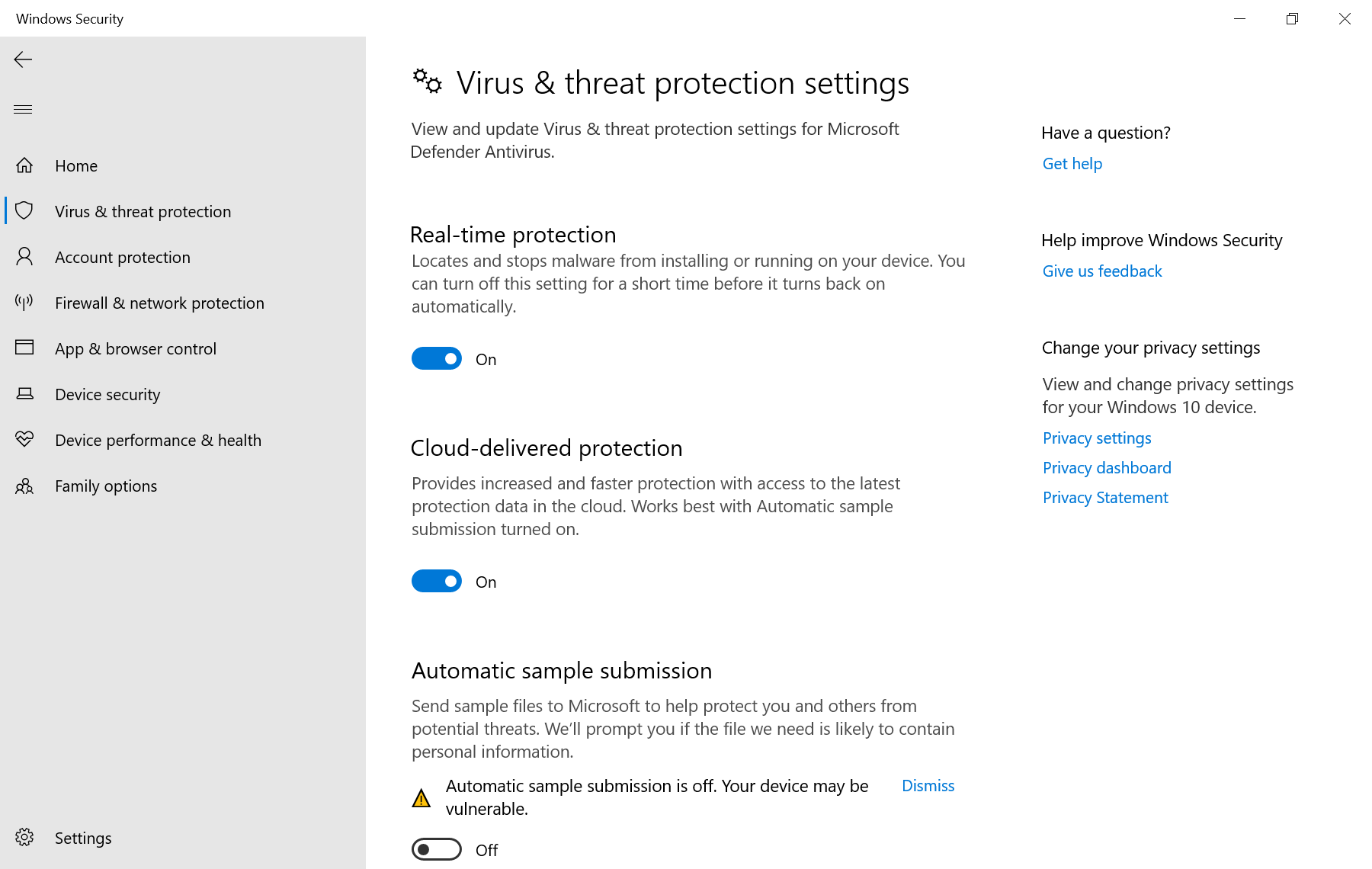Microsoft Defender Antivirus is the default antivirus protection on the company’s Windows 10 operating system. If administrators don’t install a different antivirus solution, Windows Defender Antivirus is enabled and will protect the system in various ways.
Administrators may configure some settings of the program in the Windows 10 Settings application; this includes turning various security feature such as cloud delivered protection, tamper protection, exploit protection or ransomware protection on or off. What administrators cannot do is disable the program entirely using the Settings app. Disabling real-time protection offers a temporary recourse only as it is automatically enabled again by the operating system.

Microsoft released an update for the security program earlier this month that introduced two major changes to it. The first made Microsoft Defender Antivirus flag hosts file manipulations as malicious if they contained entries for certain Microsoft servers, mostly Telemetry servers used to submit data from the Windows 10 device to Microsoft.
The second change came to light just recently. It appears that Microsoft disabled the Registry key DisableAntiSpyware which administrators could use to disable Microsoft Windows Defender.
Most uses should not deactivate Microsoft Defender Antivirus if no other antivirus program is active on the system. In some situations, it may be required to disable the tool:
- If an installed antivirus solution did not lead to Microsoft Defender Antivirus disabling itself.
- If the user needs to disable the software because of incompatibilities.
- If no antivirus software is required.
Our colleagues over at Deskmodder note that third-party software such as Defender Control should still work. The equally excellent Configure Defender may work as well.
It is unclear at this point in time if the Group Policy options to disable Windows Defender still work.
Closing Words
Most third-party antivirus solutions come with options to turn off the protection. While not advised, the programs do give users the choice to do so if they choose that option.
Are the two changes in the latest version of Microsoft Windows Defender related? Microsoft is tight lipped about the changes and it seems unlikely that it is going to release a public statement about either of these.
Now You: Which antivirus solution do you use, and why?
Thank you for being a Ghacks reader. The post Microsoft makes it difficult to disable Windows Defender on Windows 10 appeared first on gHacks Technology News.
